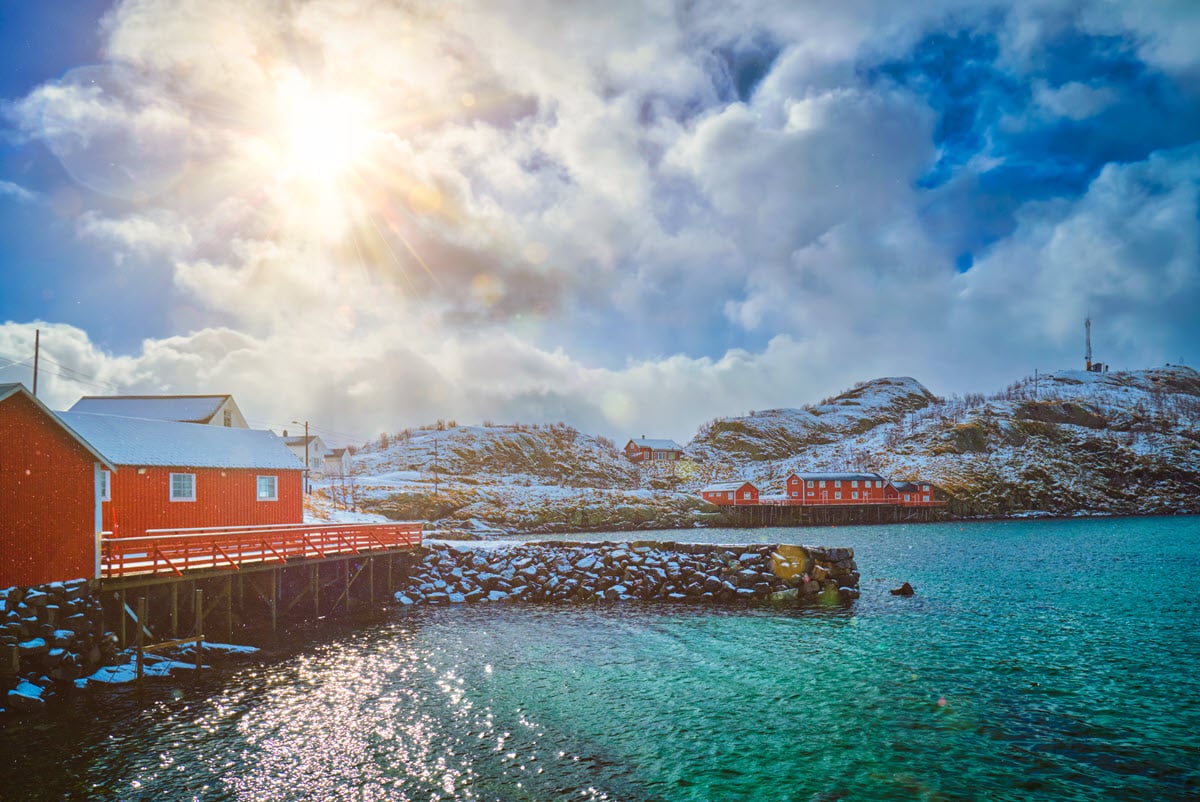Norway is a Nordic country located in Northern Europe. It’s one of the richest countries in the world and is also the world’s largest producer of natural gas and oil outside of the Middle East. Norway covers a total area of 385,207 square kilometers (148,729 sq mi). With a population of only 5.379 million people, it’s very sparsely populated.
Norway is known for its thousands of incredible fjords, scenic train journeys, and diverse landscapes that make this country a paradise for lovers of the outdoors. The capital Oslo is a modern and green metropolis, but the picturesque town of Bergen and The Lofoten Islands are even bigger attractions.
Oslo
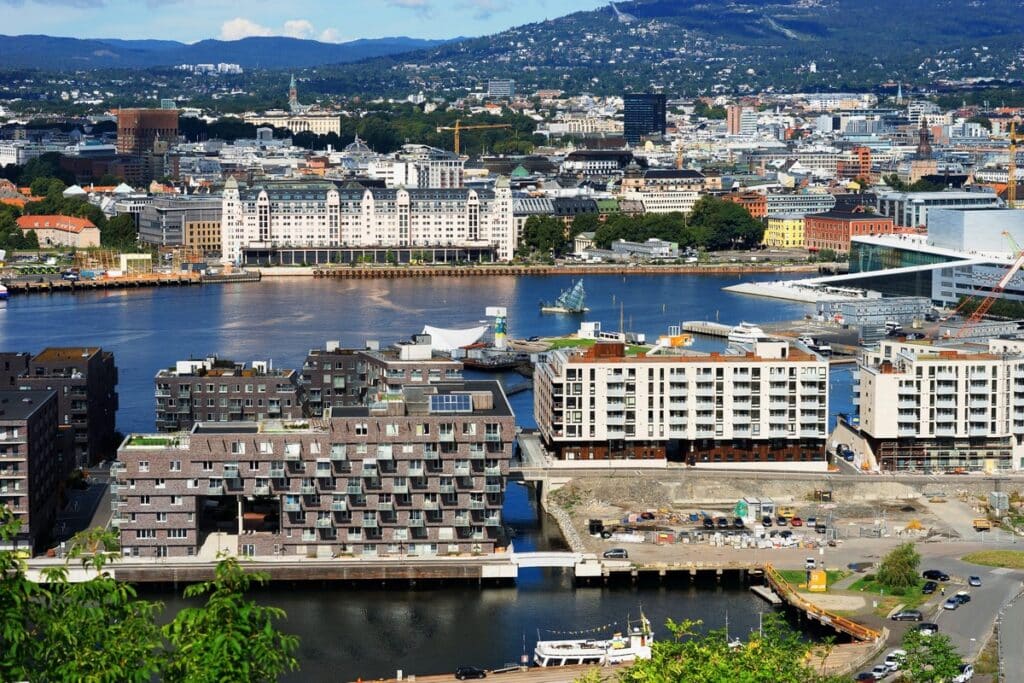
Oslo is the country’s capital and vibrant commercial heart. The city is known as an exceptionally green city thanks to half of Oslo being covered in forests and parks and the fjord that extends to the city center.
The center itself is becoming increasingly car-free, making this a capital you can easily explore on foot.
The city is very progressive, and this is made clear by all the green experiences on offer. For example, you can go kayak in the city or even cycle and ski in the forest. Next to this, you can find plenty of restaurants with green menus and environmentally certified hotels.
Norwegian Fjords
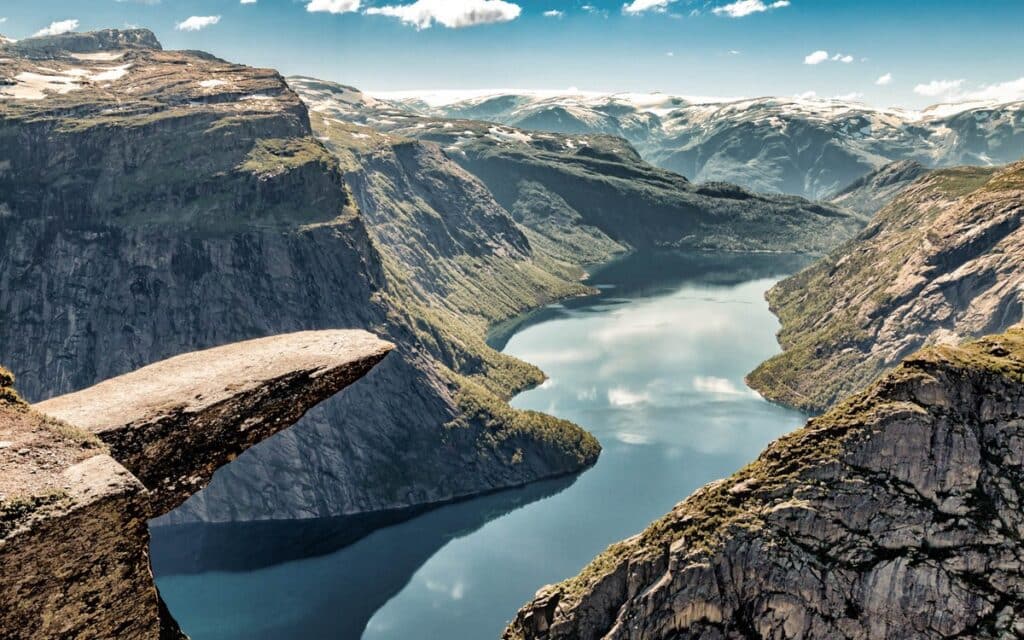
Although you can find fjords in more countries than only Norway, the country is arguably the one most known for its breathtaking fjords. After all, Western Norway is known as “Fjordland.”
A fjord is a long, deep, narrow body of water that reaches far inland. Most fjords are enclosed in U-shaped valleys surrounded by steep walls of rock.
Norway has over 1,700 named fjords dotted along the 57,000km-long Norwegian coast. This area is also home to two fjords featured on UNESCO’s World Heritage List: Nærøyfjord and Geirangerfjord.
Sognefjord
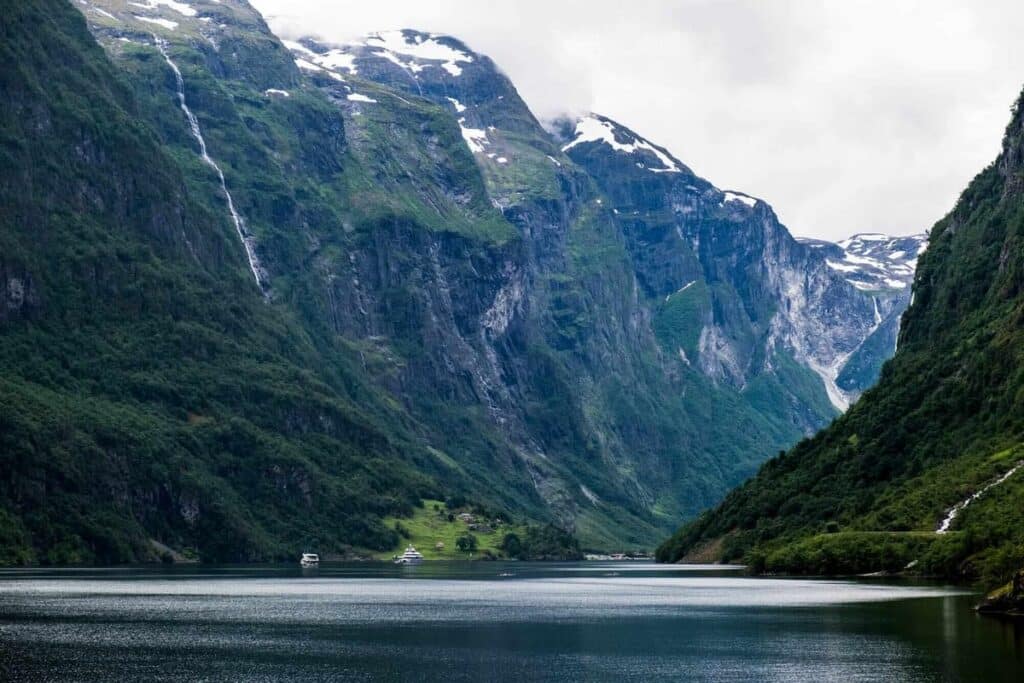
The Sognefjord or Sognefjorden, also known as the King of the Fjords by locals, is the largest and deepest fjord in Norway. You’ll find it in the western part of Norway in the Vestland country.
The fjord stretches 205 (127 miles) kilometers inland from the ocean to the Skjolden, a small village. It also branches off into numerous smaller inlets and fjords along the way.
At its widest, the fjord is almost 5 (3.1 miles) kilometers across, and the cliff walls reach as high as 1,307 meters (4288 feet). The best option to visit is to depart from Bergen.
Tromsø
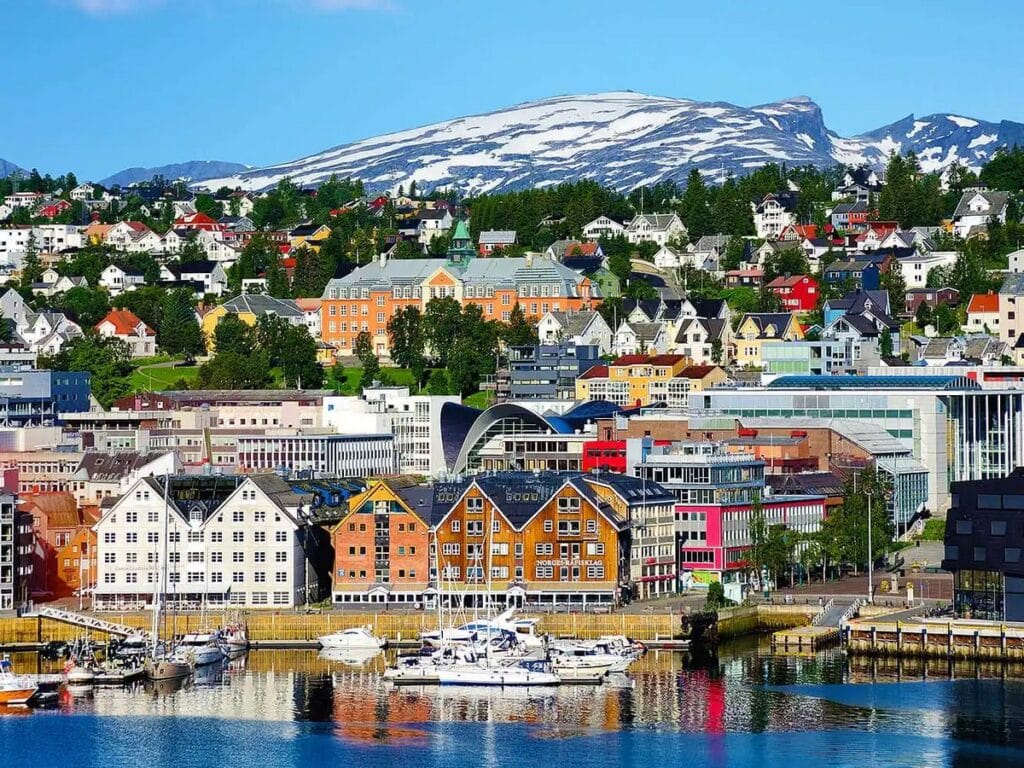
Tromsø is where you want to head to if you want to see the northern lights (aurora borealis) and the midnight sun. The town is located 349 kilometers (217 miles) north of the Arctic Circle. This location had made it ideally suited as a base for expeditions to the Arctic ever since the mid-1800s.
The area is ideal for ski touring and dog sledding. Still, there are also numerous other activities on offer, such as visiting the Polar museum in town or spending the night at an ice hotel in the region.
Pulpit Rock (Preikestolen)
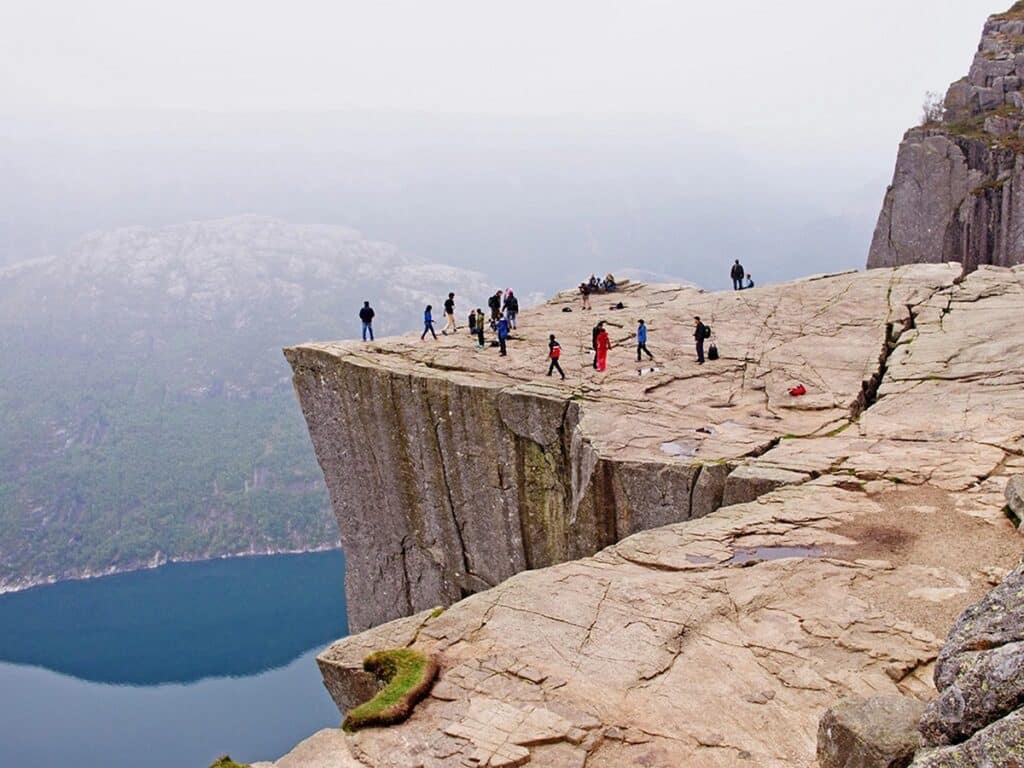
This attraction is best suited for the fit traveler that seeks an adventure. The reason for this is that the Pulpit Rock journey is a tough one that requires a two-hour uphill hike. The hike follows a series of ferry and bus rides, so overall it’s a trip that requires some upfront planning and patience.
Visitors that do make it to Pulpit Rock are rewarded with an incredible view over the Lysefjord, standing more than 600 meters (1968 fee) above water.
Munch Museum
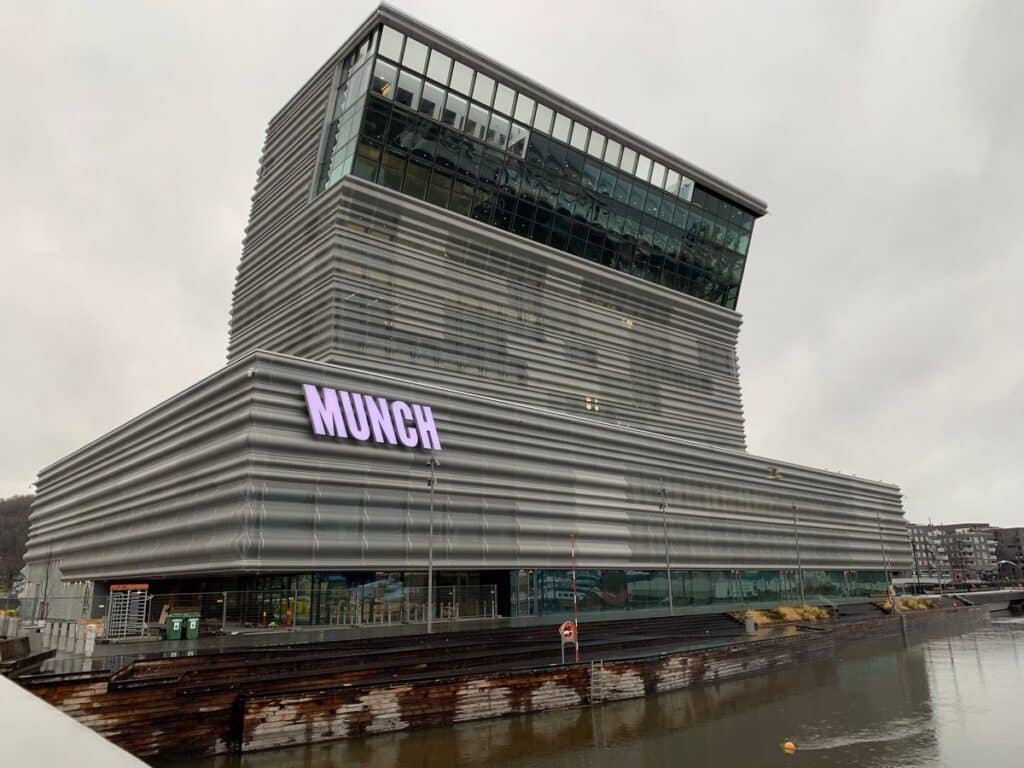
This is one of Oslo’s newest attractions and in honor of the country’s most well-known artist, Edvard Munch. Since 2020 it’s been marketed simply as Munch.
This art museum was originally opened in Tøyen in 1963 but has since moved to a state-of-the-art building in the capital. In keeping with the city’s focus on green initiatives, many of the architectural decisions of the building were climate-driven.
It’s one of the world’s largest museums dedicated to a single artist, and it’s here where you’ll see Munch’s most famous work: The Scream.
The Lofoten Islands
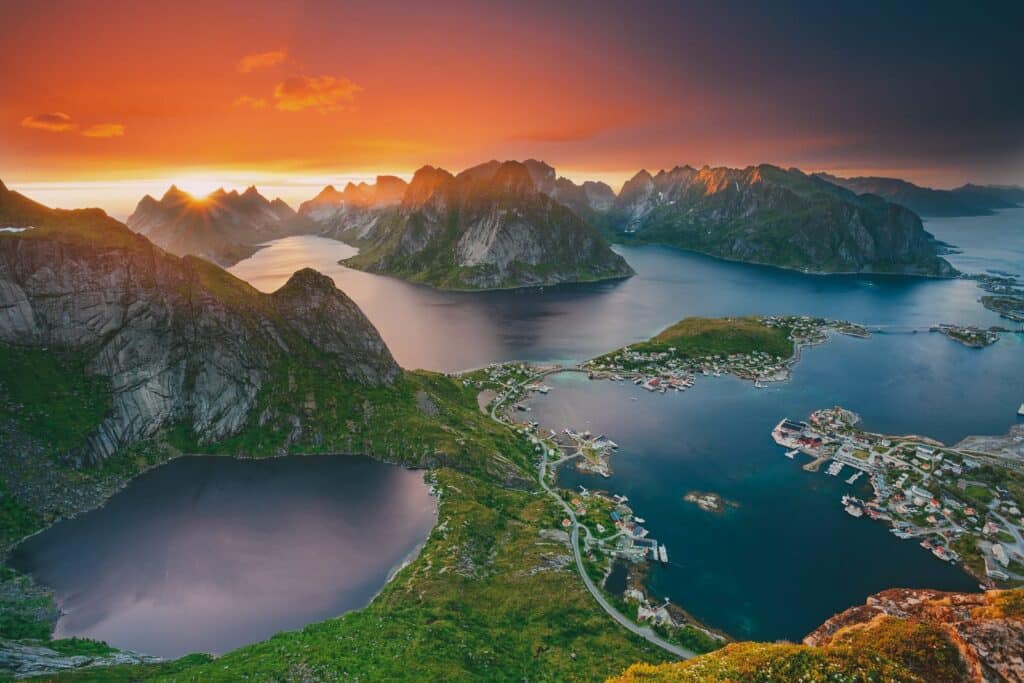
The Lofoten Islands form an archipelago off the coast of northwestern Norway. The climate here is surprisingly mild despite being located within the Arctic Circle, thanks to the Gulf Stream.
The islands are a popular destination for both locals and foreigners. It offers magnificent scenery with beaches and traditional fishing villages. There are plenty of activities on offer depending on whether you want to do something active like kayaking or whether you prefer visiting museums.
The islands also attract visitors hoping to get a glimpse of the northern lights.
Bergen
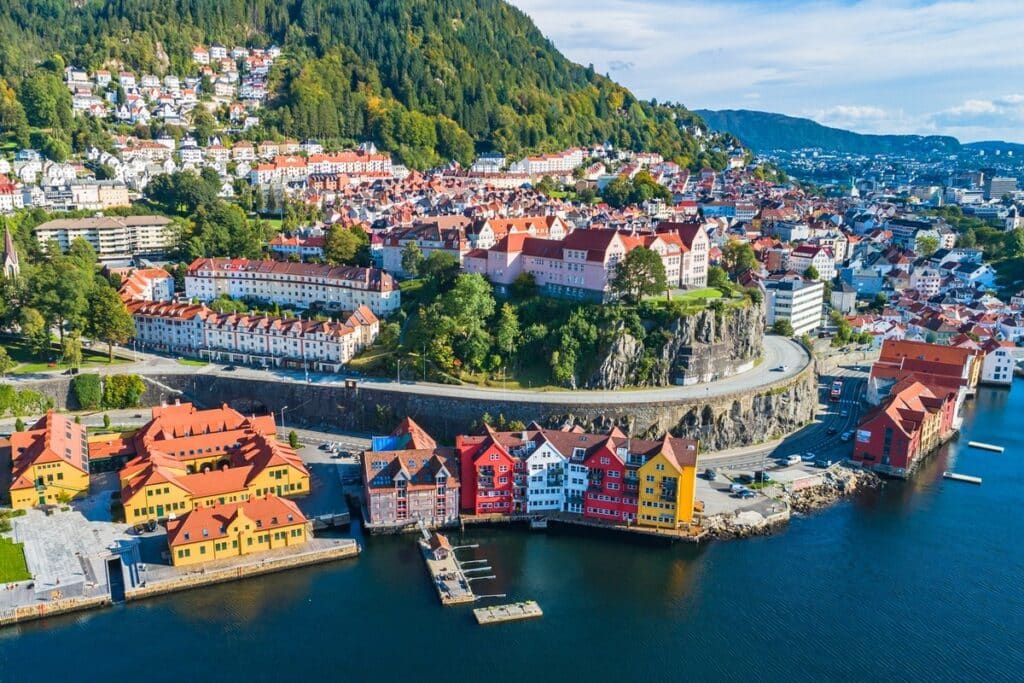
Bergen is the country’s second-largest city and a popular stopover for cruise ships from the region. It’s not hard to see why this is the case. The city’s stunning natural harbor, together with it being surrounded by a ring of hills known as the Seven Mountains (De syv fjell), makes it a fairy-tale destination.
Bergen is filled with all kinds of museums as well as being the country’s cultural heart. You’ll find all kinds of music events here, such as the Nattjazz Festival, Bergenfest, and the Bergen International Festival.
The Vigeland Sculpture Park
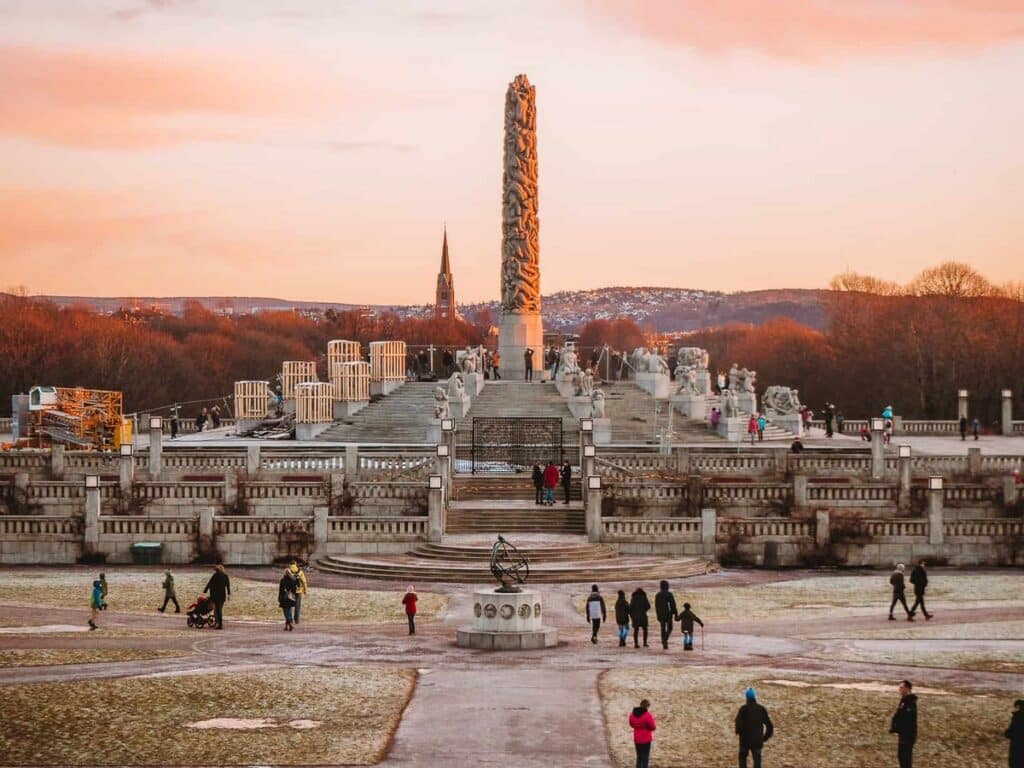
This sculpture park is one of the capital’s top attractions. It’s home to 650 sculptures created by the artist Gustav Vigeland. They are created out of bronze, wrought iron, and granite. All the sculptures are divided into themed groups.
The most famous of these is the fountain group that culminates in a 16-meter (52 foot) monolith that depicts human life. The sculpture consists of 121 human figures clinging and floating together as a whole.
The statue is crowned with children. Some people have interpreted the sculpture as a kind of vision of resurrection and the human longing and striving for spirituality.
Lillehammer
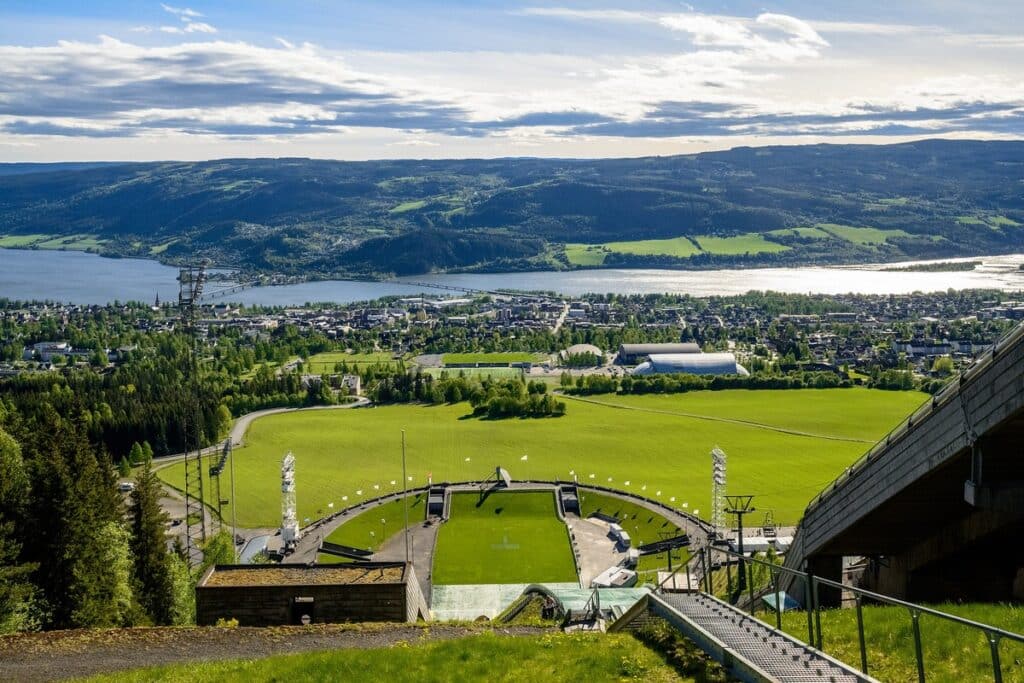
Lillehammer is the perfect destination for those looking for a year-round outdoor destination that has something for all age groups.
From Lillehammer, the national parks of Jotunheimen, Langsua, and Rondane are all within easy reach. In the winter, there are several ski resorts around, and in the summer, there is plenty of opportunities for hiking and cycling.
One of the area’s top attractions is Malhaugen Park. It’s an open-air museum that consists of more than 100 historic buildings, such as workshops and 18th-century farmhouses.
The Atlantic Ocean Road
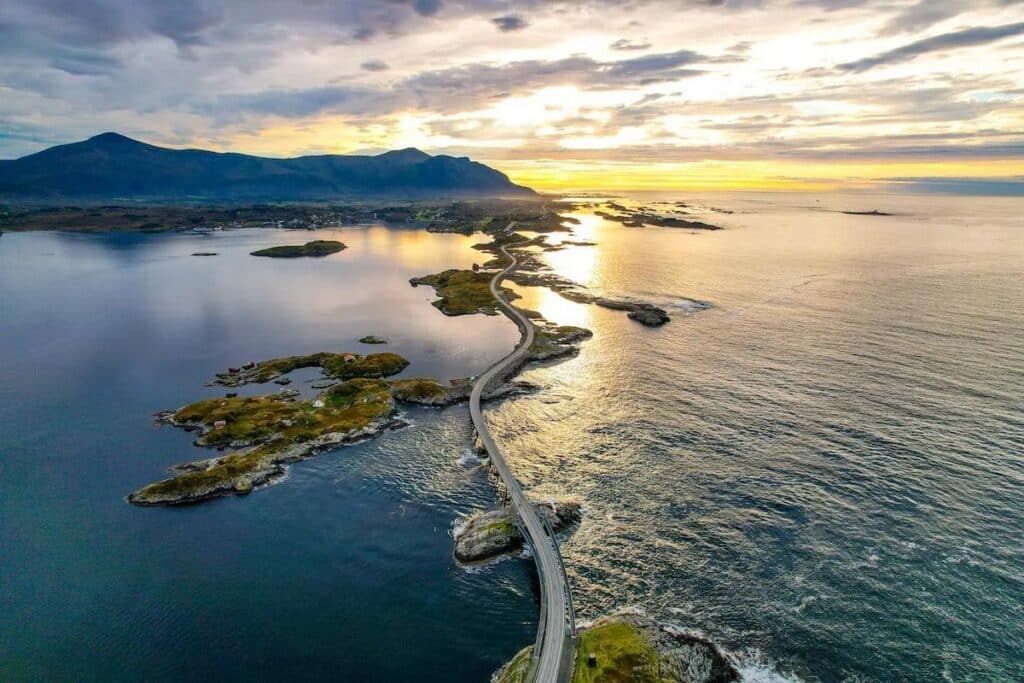
If you get the chance to drive this scenic route, consider yourself lucky. This stretch of road is a mere 8 kilometers (4.9 miles) long, but it’s one of the world’s most scenic drives.
This architectural feat connects numerous tiny islands and, in the process, lures nature enthusiast that wants to dive here or just get as close as possible to the sea. On the drive, you can stop by little fishing villages, wooden churches and see the well-known Trolls’ Church Cave.
Tønsberg
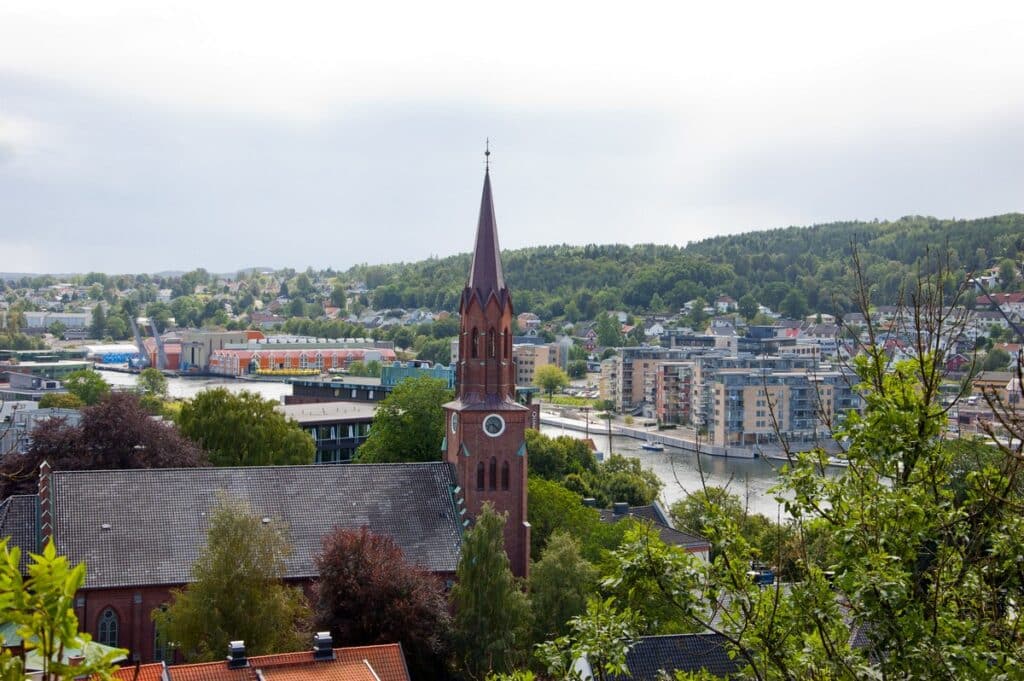
Vikings found the city of Tønsberg in c. ad 871, making it Norway’s oldest town. You’ll also find the oldest ruin site in Scandinavia here. Mount Slottsfjell (Castle Rock) is home to the 13th-century Castle Rock Tower and the Slottsfjel Museum (Slottsfjellsmuseet).
For something more modern, check out the Haugar Vestfold art museum for a good collection of contemporary art.
The city is the starting point of the Vestfold Viking Trail. This trail is a historic route on which you can find Viking-age burial sites and settlements.
Scenic Train Journeys
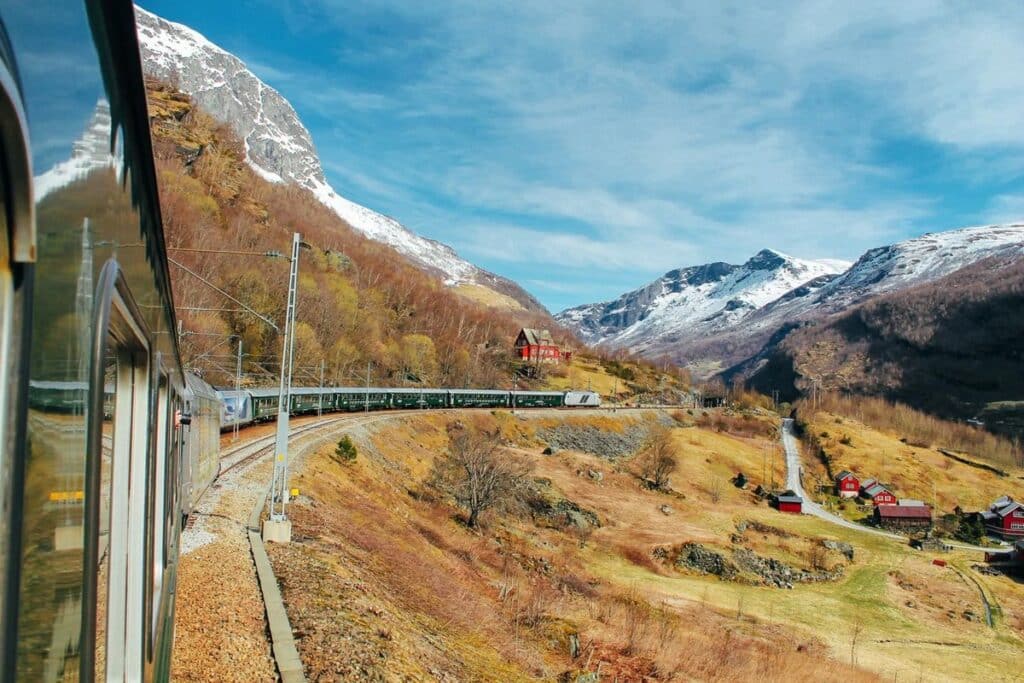
Norway is renowned for having some of the world’s most scenic train journeys. Although there are many, probably the most beautiful and popular one is the Bergen Line.
Norway’s rail lines stretch more than 3,218 kilometers (2000 miles). On the routes, there are some 775 tunnels and over 3,000 bridges.
On the seven-hour journey between Oslo and Bergen passengers pass through incredible scenery that includes fjords, fields, forests, and mountains.
If you have the time, take the opportunity to transfer at Myrdal station to experience the world-famous Flåm Line. This takes you on a trip through some of Norway’s most breathtaking nature.
The Akershus Fortress (Akershus Festning) in Oslo
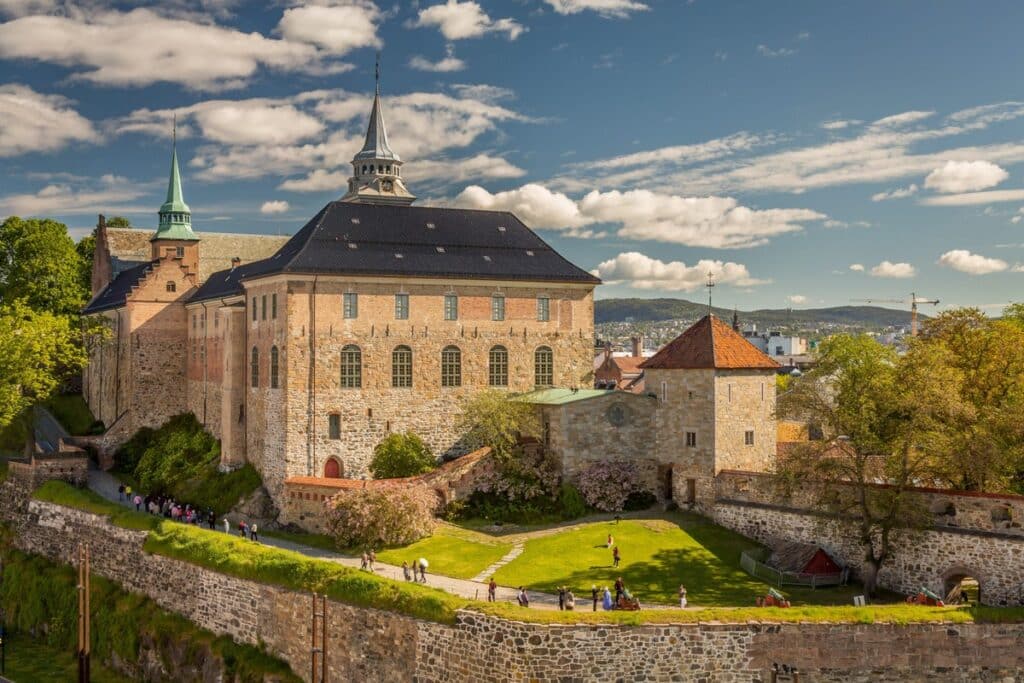
King Håkon V comissioned the Akershus Castle and Fortress (Akershus Festning) in 1299. Given the castle’s medieval strategic location, it was able to withstand many onslaughts throughout time. Christian IV (1588-1648) later modernized the castle and turned it into a Renaissance royal residence.
This is a great attraction to visit during the summer as guided tours are on offer then.
Trolltunga
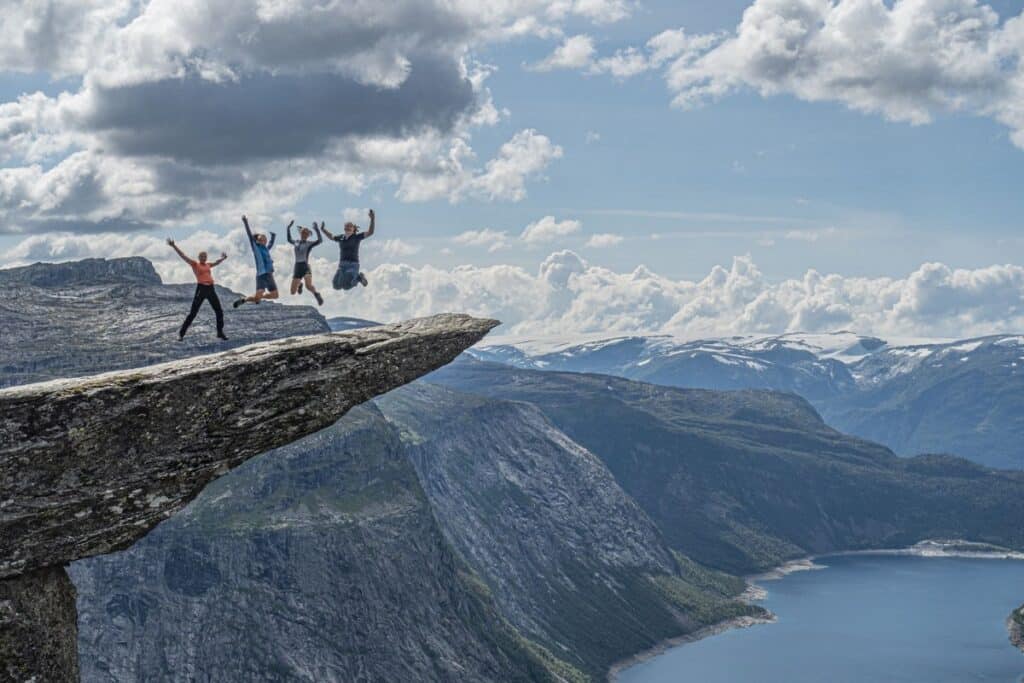
Trolltunga is arguably the country’s most incredible cliff. It’s located 150 kilometers (93 miles) southeast of Bergen and hovers about 700 meters ( 2296 feet) above Lake Ringedalsvatnet.
This is a trendy Instagram spot, so if you are keen on visiting, make sure to get there on time before the hordes of tourists descend. Also, plan accordingly for the hike as it’s not a quick stroll but a 13 kilometers (15 miles) hike.
Svalbard and the Doomsday Vault
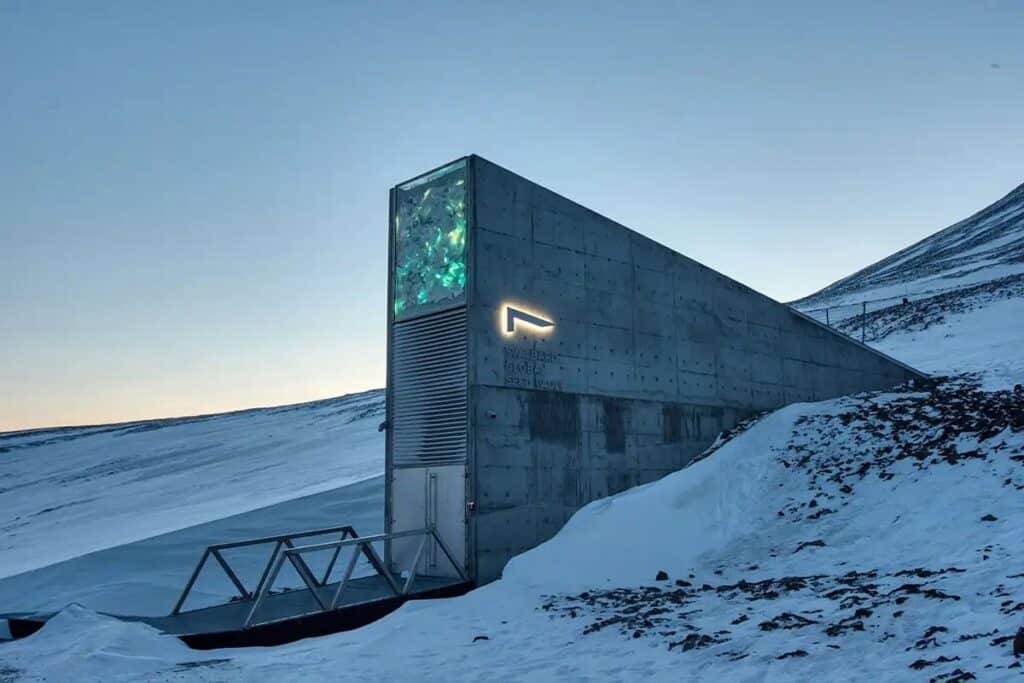
Near the North Pole, you can find a cluster of islands owned by Norway called Svalbard. It’s actually the furthest north a commercial airline can take you. Only about 2500 people live there in addition to all kinds of wild arctic animals.
Given the island’s unique and isolated destination, it’s also home to the Seed Bank of Svalbard, also known as the “Doomsday Vault”.
The Seed Vault has the capacity to store 4.5 million varieties of crops. At the moment, the Vault holds over 1,000,000 samples originating from almost every country in the world.
Norway’s National Day
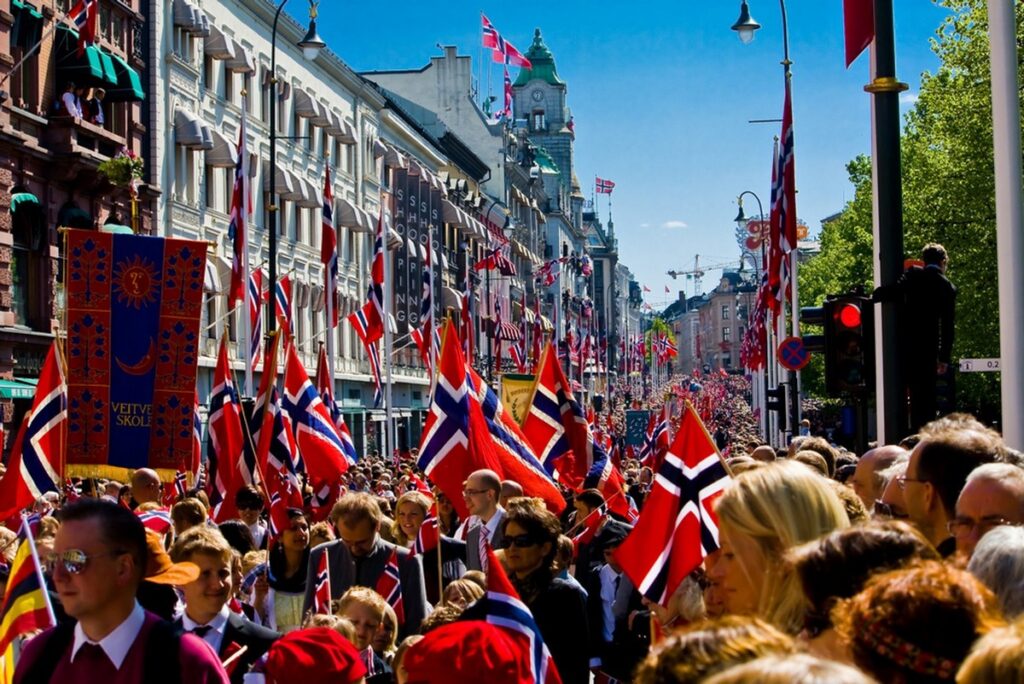
If you just happened to land in Norway on May 17 with no prior knowledge of this day, you’ll feel like you entered a different universe.
This is the country’s most important national holiday, and Norwegians shed their usual clothes to dress up in traditional clothes from yesteryear. Or, more precisely, they dress in their Bunad or national costume to celebrate the biggest party of the year.
This day is known as constitution day as it marks the signing of the constitution that declared Norway to be an independent kingdom.
